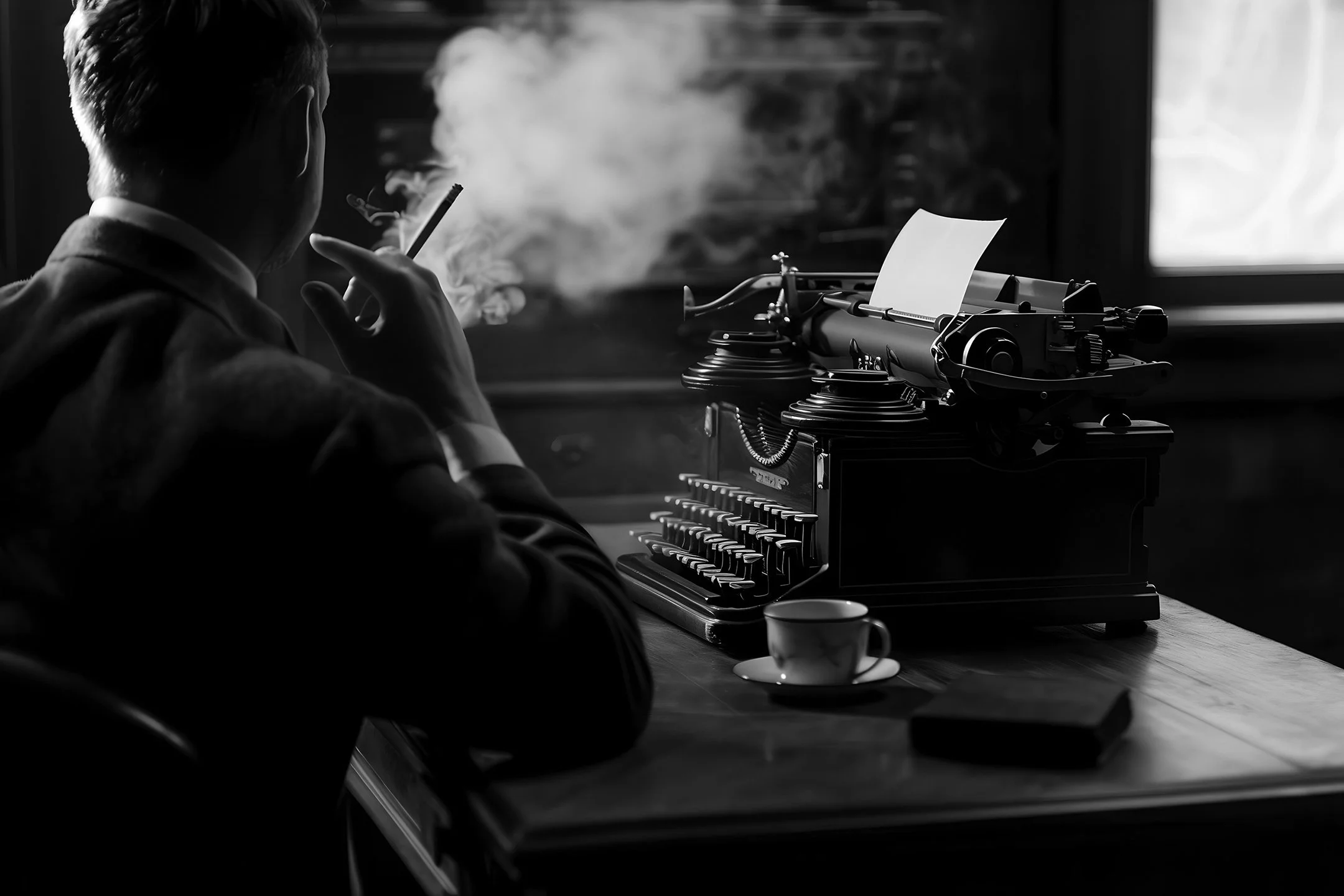Eddie McBoon — A Life in Shadows and Smoke
The only known surviving photograph of Eddie McBoon, circa 1960
Edward “Eddie” McBoon (allegedly born 1918 – disappeared 1965) was the elusive mind behind 21 popular 1950’s pulp crime novels that tore through post-war America’s underbelly with a .38 in one hand and a whiskey in the other. His creation, fast-talking, hard-hitting private eye Mack Denver, stalked the rain-slick streets of Boston, always one wisecrack away from trouble. Denver’s reluctant ally, grizzled cop Tom Stein, often unsure whether to hug or shoot him.
McBoon’s writing dripped with authenticity—too much, some said. Dialogue rang real, locations precise, and the crimes often mirrored headlines just a little too closely.
Rumors swirled that McBoon had once run with the same mobsters his hero busted, or had been a cop himself. When asked, McBoon would change his backstory every time—ex-boxer, war correspondent, jazz pianist, grifter. He gave nothing away, except what he wrote.
In 1965, at the peak of his fame, McBoon released a so-called memoir “Blood in the Gutter: The Real Mack Denver.” Weeks later, he vanished. No body, no note. Just the sudden, echoing silence of a typewriter gone cold.
For 30 years, McBoon’s legacy was part legend, part literary footnote—until 1995, when a woman walked into the newsroom of The Boston Globe with a tattered manuscript, and a claim: “Eddie McBoon was my father. And here’s the real story.”
The document she carried—codenamed “The Roxanne Papers” by the press—laid bare a twisted, decades-long web of corruption between Boston PD, organized crime families, and political fixers. Her father, it alleged, had tried to expose it all under the cover of pulp fiction—and paid the price.
Since then, a firestorm of lawsuits, re-investigations, and broken NDAs has swirled around. A film adaptation, “The Real Mack Denver,” is said to be in production, held in limbo by legal battles, whispered threats, and a producer who travels with private security.
Eddie McBoon remains one of crime fiction’s most mysterious figures. Whether just a storyteller with a dark imagination or a whistleblower with a typewriter, one thing is certain: he knew too much—and he told just enough.
Until the movie drops, all we’ve got are 21 novellas, finally re-printed after sixty or so long years—and the shadows between them.

